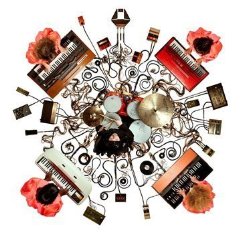
Sisters Of Transisters – At The Ferranti Institute
Bold and brazen, Sisters of Transistors album At the Ferranti Institute is comfortably one of the most carnival-like albums you are likely to hear all year. Compiled using entirely vintage transistor organs, it is an album of immense intricacy that ventures its way through eleven songs like the soundtrack for a violent, urban video game.
Over the haunting organs and diverse segments of house beats, both male and female mouths howl sexy rituals with the attitude of The Shangri-Las and the eeriness of The Doors. However, it is often the songs without vocals, for example Sisterhead and Unicorn Light Brigade that delve deeper into the brilliance of Sisters of Transistors sound, and when mixing more progressive synth sounds with musical floods of chord patterns, the potentially odd becomes nauseatingly wonderful.
However, for all its ingenuity and originality, the album does suffer from sounding too similar from track to track. Often, songs can merge into one eight minute synth solo, leaving the record feeling a little under thought and over produced. Whilst it isn’t an album to listen to over and over again, the occasional snippet of this well ORGAN-ised record will inevitably leave most listeners interested and swaying, without knowing why.
